In the diverse world of shorebirds, the common thread that unites many species is the distinctive curvature of their bills. This unique feature plays an important role in their feeding habits and sets them apart in the bird world. Let’s explore 15 Types of Shore Birds with a Curved Beak in this post.
Different Types of Shore Birds with a Curved Beak
Terek Sandpiper (Xenus cinereus)
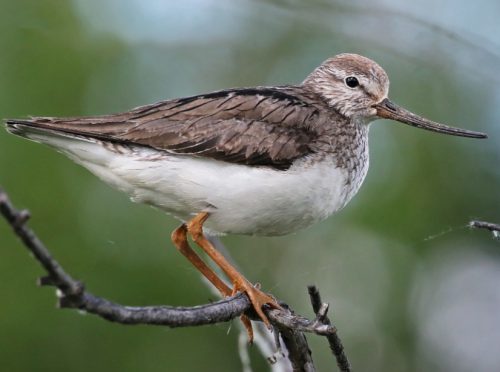
This amazing bird, named after the Russian River, can eat aquatic insects, mollusks, and crustaceans thanks to its slightly tipped beak. It’s common to see Terek sandpipers skittering around beaches.
Red-necked Avocet (Recurvirostra novaehollandiae)
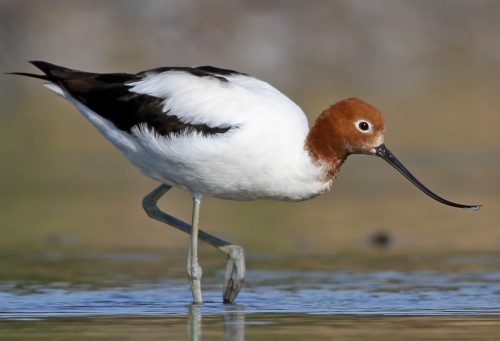
This distinctive bird, which is native to Australia, has a black bill that curves upward. In shallow water, the red-necked avocet feeds the minute invertebrates by swinging its beak side to side.
Eskimo curlew (Numenius borealis)
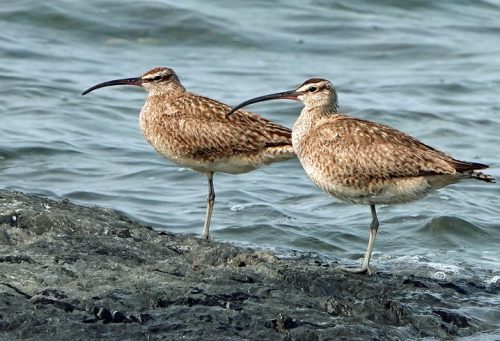
With a longer beak that slants downward, this curlew resembles the tiny Hudsonian curlew. Its dark underparts and speckled upperparts are both present. This bird is unique among shorebirds due to its unusual look and migratory patterns.
Andean Avocet (Recurvirostra andina)
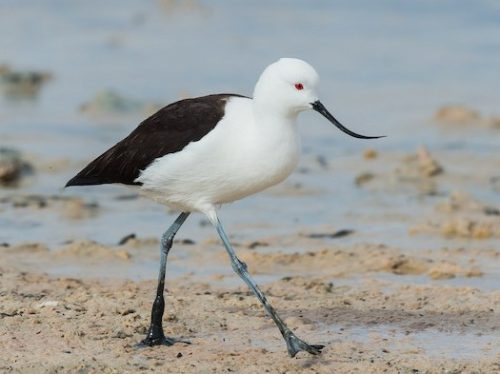
With dark brown and white plumage, this huge wader is distinguished by its upwards curled bill. Clusters of them build their nests next to shallow lakes. Its remarkable ability to forage with its curled beak is astounding.
Pied Avocet (Recurvirostra avosetta)
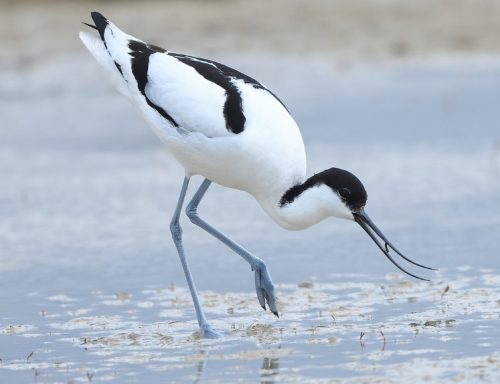
These birds, which are found in areas of Europe, Asia, and Africa, have thin, upturned beak. They are easily recognized by their stunning body of black and white hues and their lengthy, bluish legs. Males and females have the same appearance.
American Avocet (Recurvirostra americana)
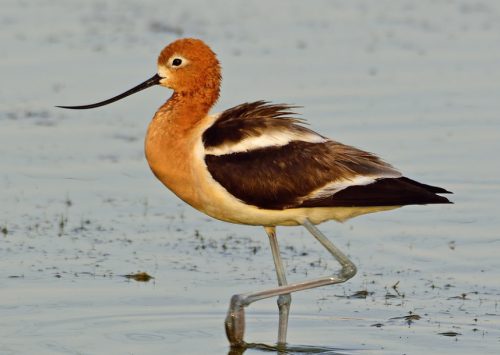
The American Avocet is an intriguing example of a shore bird with a curved beak, thanks to its slim, bluish-gray legs. The bright orange color of its head occurs during the breeding season. It is frequently found on the coastal coastlines and wetlands of North America.
Eurasian Whimbrel (Numenius phaeopus)
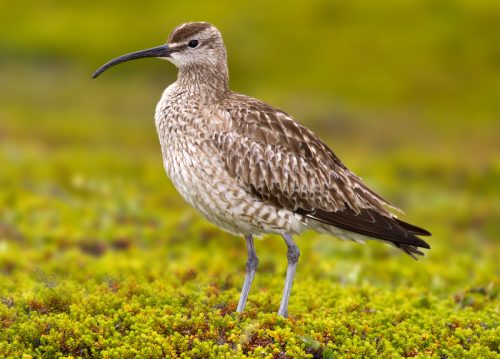
It has a longer, more decurved beak than the curlew, which looks similar. They may easily be distinguished from other shorebirds thanks to their unique call and unusual look.
Marbled Godwit (Limosa fedoa)
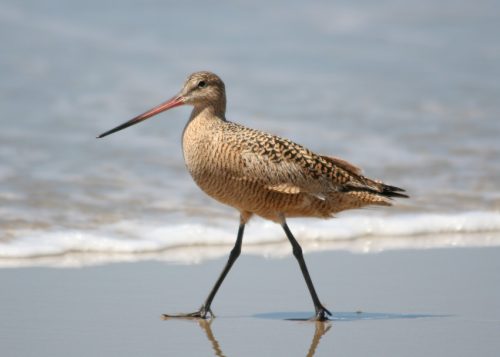
This bird has buff-brown plumage with cinnamon-colored wing linings and dark bars on the chest. It has a long, slightly upturned bill. They mostly hunt crustaceans with their slightly bent bill, and when they’re in the air, they make a distinctive whistled cry.
Long-billed Curlew (Numenius americanus)
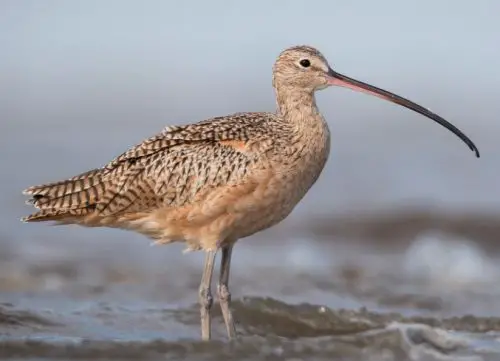
This curlew, which is the biggest shorebird in North America, hunts crabs and other crustaceans in the mud with its long, downward-curving bill. To the family Scolopacidae belongs the long-billed curlew.
Bristle-thighed Curlew (Numenius tahitiensis)

Its large, decurved bill and bristling plumage are what make this bird so distinctive. It breeds only in Alaska and spends the winter on tropical Pacific islands as one of the Shore Birds with a Curved Beak. Because of its remarkable look, this bird is well-liked by bird aficionados.
Eurasian Curlew (Numenius arquata)
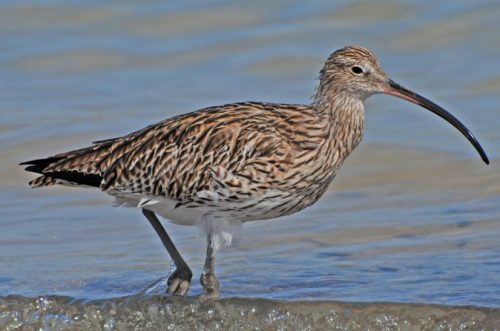
The Eurasian curlew, the largest wader in Europe, is distinguished by its long, downward-curving bill. It can forage deeper in the mud thanks to the considerable length of its beak. Their depressing melody also enhances the atmosphere of their environments.
Slender-billed Curlew (Numenius tenuirostris)
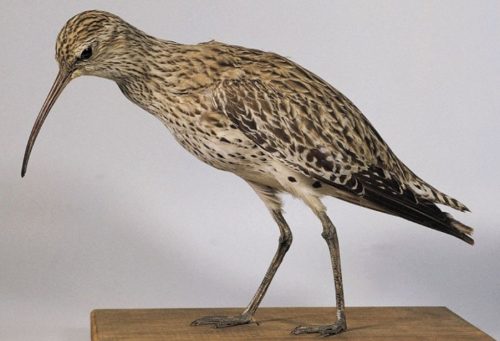
This bird, which is critically endangered, was formerly common throughout the Mediterranean and is distinguished by its slender, slightly decurved beak. Due of the bird’s critical status, any sighting is significant.
Far Eastern Curlew (Numenius madagascariensis)
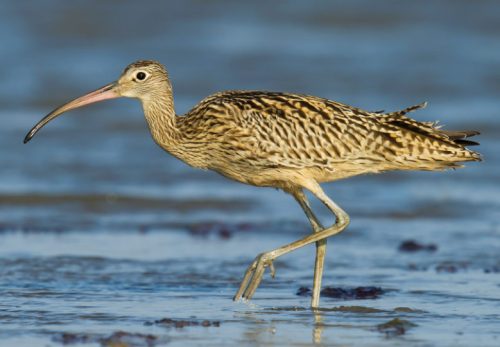
The bill of this largest sandpiper is very long and downward-curved. Large populations are frequently observed during migration. This bird’s characteristic beak aids in capturing prey in the mud.
Ibisbill (Ibidorhyncha struthersii)
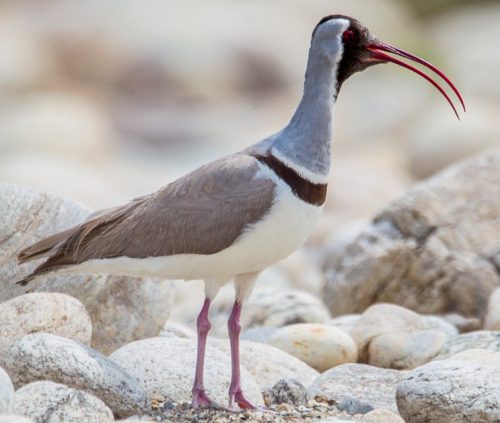
With its curled bill, this remarkable bird is actually a wader rather than an ibis. It can be found in Asia’s hilly regions beside stony rivers. It’s really intriguing because of its unique appearance and lonely character.






